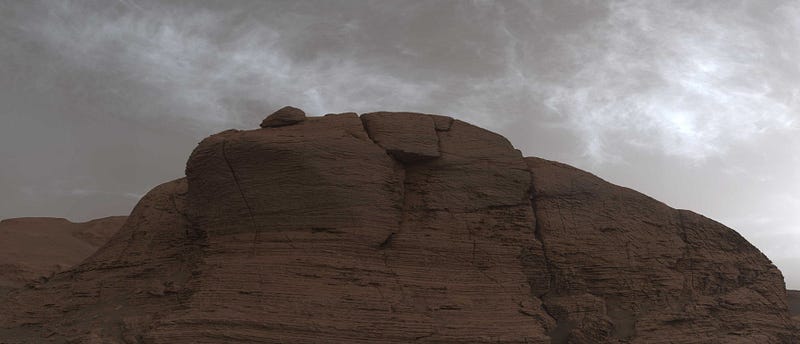Charging Ahead in 2023: Innovations in Battery Technology and Citizen Science
Written on
Chapter 1: The Surge in Battery Technology
At present, battery technology is a thriving area of exploration worldwide, as various stakeholders seek groundbreaking innovations that could lead to substantial financial gains. The rapid increase in electric vehicle (EV) sales globally illustrates the urgency behind these advancements. In 2022, over 10% of all car sales were electric, amounting to more than 16.5 million vehicles, and projections suggest that this could rise to 30% by the decade's end.
Government initiatives play a pivotal role in this growth, particularly in the U.S. where the Inflation Reduction Act allocates $370 billion for climate and clean energy, including significant investments in EV and battery production. As a result, automotive manufacturers are swiftly transitioning to electric models, eager to catch up with Tesla, especially as regulations are set to phase out fossil fuel engines in several major markets. Currently, the market boasts over 450 EV models.
However, challenges such as affordability and access to charging infrastructure remain topics for future discussion.

Chapter 2: The Evolution of Battery Chemistry
Lithium-ion batteries, despite being an older technology, continue to dominate in laptops, smartphones, and electric vehicles. The increasing demand has driven down prices, allowing current models to power EVs for hundreds of miles on a single charge. Nonetheless, the quest for enhanced capacity, quicker charging times, and reduced costs continues.
One promising avenue is the development of solid-state batteries, which replace the liquid electrolyte used in lithium-ion batteries with a solid material. This switch allows for greater energy density, faster charging, and reduced fire risks. Companies like Toyota, Hyundai, and Honda are at the forefront of this innovation, while Quantumscape, a U.S. manufacturer, has partnered with Volkswagen to introduce lithium metal solid-state batteries by 2025.
Another intriguing approach involves substituting lithium with sodium in battery chemistry. Chinese giant CATL plans to start mass production of sodium-based batteries in 2023. While performance may not significantly surpass lithium-ion, sodium batteries offer a cheaper production process without reliance on lithium. Given the price fluctuations of battery materials, such chemistry changes are crucial for ongoing research.
Nickel manganese cobalt has traditionally been the leading cathode material in EV batteries, but it is being increasingly replaced by lithium iron phosphate (LFP). This transition has seen LFP's market share grow from 10% in 2018 to 40% last year, reflecting a broader push to minimize costs.
In light of the unsustainable demand for raw materials, battery recycling is gaining traction and investment. Chinese firms like CATL are leading the charge, but the U.S. and Europe are set to follow suit. Companies like Redwood Materials in Nevada are producing copper foil from recycled materials, while Li-Cycle in Toronto focuses on purifying essential metals like lithium and nickel for reuse.
Chapter 3: Citizen Science and NASA's Involvement
The more I learn about NASA, the more I admire its initiatives. Recently, I wrote about NASA's funding for battery research and its collaboration with Boeing on the future of passenger aircraft. Moreover, NASA actively promotes citizen science, encouraging public participation in scientific endeavors. So far, over 400 citizen scientists have co-authored research publications, contributing to numerous discoveries.
No formal scientific background is necessary. If you're eager to explore the natural world, there are opportunities to engage in cutting-edge science and contribute to meaningful discoveries.
Many might assume that NASA's citizen science projects focus exclusively on distant celestial bodies; while such projects exist, there are many initiatives closer to home. For instance, the Landslide Reporter project encourages citizen scientists to report local landslide occurrences using a dedicated app, which compiles data in the Cooperative Open Online Landslide Repository (COOLR). This global data aggregation aids in the development of models to help communities prepare for future disasters.

Chapter 4: Tracking Kelp and Mars Clouds
Another engaging project, Floating Forests, focuses on mapping the global distribution of kelp. Landsat satellites have been capturing images of Earth's surface every 16 days since 1984, but their design does not allow for effective detection of kelp. Here, citizen scientists become invaluable, as they can identify kelp patterns more accurately than computers. Kelp is crucial for ocean health, serving as a habitat and food source for various marine organisms, and its rapid growth makes it a significant component of coastal ecosystems.

For those with a flair for exploration, the Cloudspotting on Mars project offers an exciting opportunity. The image displayed, often mistaken for a scene in Arizona, is actually a photograph taken by NASA's Curiosity rover, showcasing icy clouds on Mars. This project seeks to understand the composition of Martian clouds, the reasons behind the planet's cold atmosphere, and how cloud formations change throughout the day and across seasons.
